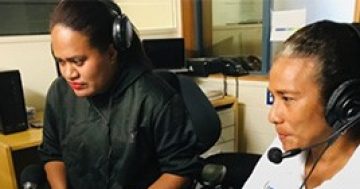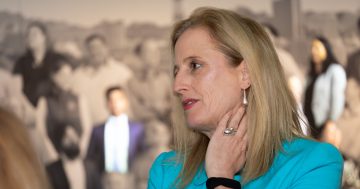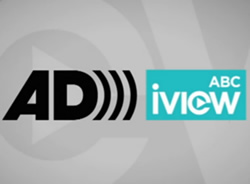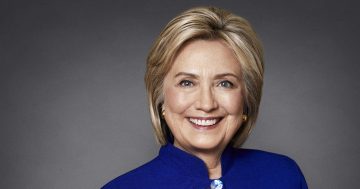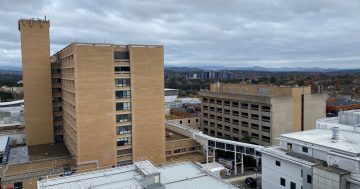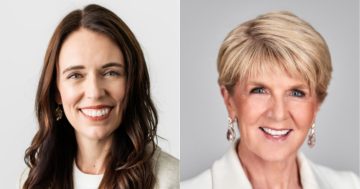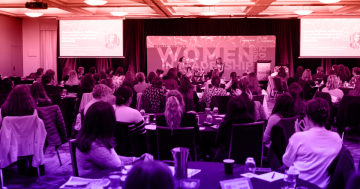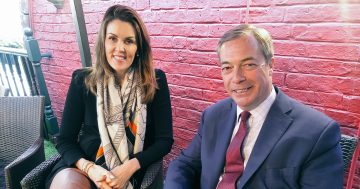Ginger Gorman* says the Australian Broadcasting Corporation (ABC) may have the answer to achieving equal gender representation in the media and at work.
 It’s a man’s world, alright. Or that’s what you’d have to assume if you turn on TV or radio.
It’s a man’s world, alright. Or that’s what you’d have to assume if you turn on TV or radio.
Women might make up just over half of the Australian population, but they are quoted in the media just under 23 per cent of the time.
That means blokes are quoted a whopping 77 per cent of the time.
But what if there was a simple way to make sure women were represented better in the media?
We’re not just talking about stories that are about women. We’re also talking about yarns that feature women as experts or interviewees.
Well maybe, just maybe, the ABC has the answer.
In a recent presentation at the inaugural BroadAgenda “Equals Now” global symposium held at the University of Canberra, ABC 50:50 Project’s co-lead Emma Pearce and her team-mate, Flip Prior, told the audience about their groundbreaking 50:50 Project to better represent women in the broadcaster’s news content.
When the team formed in December 2018, men’s voices dominated ABC News’ coverage across programming – the male/female split was around 70/30.
In March this year, the split was 49/51 in favour of women.
In a conversation moderated by former ABC broadcaster (and beloved Canberran) Alex Sloan, Flip told the symposium that initially there was some pushback from both within and without the organisation.
But that quickly changed.
“The message has always been this is going to make for better journalism. It’s not a quota system.
“It’s that we’re telling more diverse stories, and women comprise half the population. If we’re not telling their stories, and we’re seriously missing the mark,” she says.
But where on earth do you start with huge organisational change like this?
Early on, Emma, Flip and their team invited in representatives of women’s networks across different industries to ask them what they saw as the problems and the change they wanted to see.
Flip says the response was: “What took you so long? Where have you been?
“We want you to be a thought leader in this space, because the ABC can create change.”
Although many of those groups had never heard from the ABC before, they were excited about the project and agreed to help build the broadcaster’s contact books and fill them with female experts.
The ABC also did a community call out asking women to self-nominate if they were experts in a certain field.
Emma told the audience they were gratified to see women coming forward as commentators in traditionally male-dominated fields, such as economics, finance and science.
Emma says about 4,000 women responded to that call and those inside the ABC were shocked in a good way.
Flip picks up on her colleague’s point: “It’s not that the women [experts] aren’t there. They are there, but we just don’t know where to find them…and so it just took off and went viral from that point,” Flip says.
According to Emma, this incredible outcome served to highlight “…that systematic failure in our systems where everybody [at the ABC] was working so fast all the time.
And so of course, they did just pick up the phone and call the established [male] contact, and we knew that our contact books, skewed male and white.”
In addition to this, Flip points to the “confidence gap” among accomplished women.
Rather than take up speaking opportunities themselves, women will often doubt themselves and refer journalists to a male colleague instead.
There has also been an ongoing push from ABC journalists over several years to organisations: “Have you got a woman we can speak to instead about that?”
Emma notes that suddenly, ABC reporters were getting a different, positive response when they called organisations asking for female experts: “And so it’s starting to get a little bit easier.”
Using Google analytics, Flip and Emma and their teams could see how many men and women were reading certain stories.
They started deeply considering the tone and pitch of articles and how women were presented.
“Teams are tracking the amount of men and women they have in their stories,” Flip says, “And they’re using that as a hook to have a conversation every single day about where have we fallen short, where can we do better?
“How do we change this for next time? Why do we not have any women in this story?
“And it’s really that culture change…that we’re most excited about.”
Tim Ayliffe, Managing Editor of TV and Video says achieving 50 per cent female representation hasn’t been easy, but it was worth it: “The 50/50 strategy was a no brainer for the news channel.
“Because if we could better represent the audiences we’re broadcasting to, then they’d notice.
“In 2020, we achieved our biggest broadcasting audience ever. And for every single month of the year, we have [had] 50 per cent or more females on the channel.”
“One call to action from us (to women) is, when you get a call from the media, have confidence in your own abilities, and give it a crack,” says Flip
Emma says the next step is to focus on more diversity among the women who are represented in their stories: “So we’re thinking about cultural and linguistic diversity, indigenous representation, and people living with disabilities as well.”
The ABC is happy to share the 50:50 methodology with any organisation who would like to follow their lead. Get in touch: [email protected].
*Ginger Gorman is a contributor at BroadAgenda.
This article first appeared at broadagenda.com.au.


